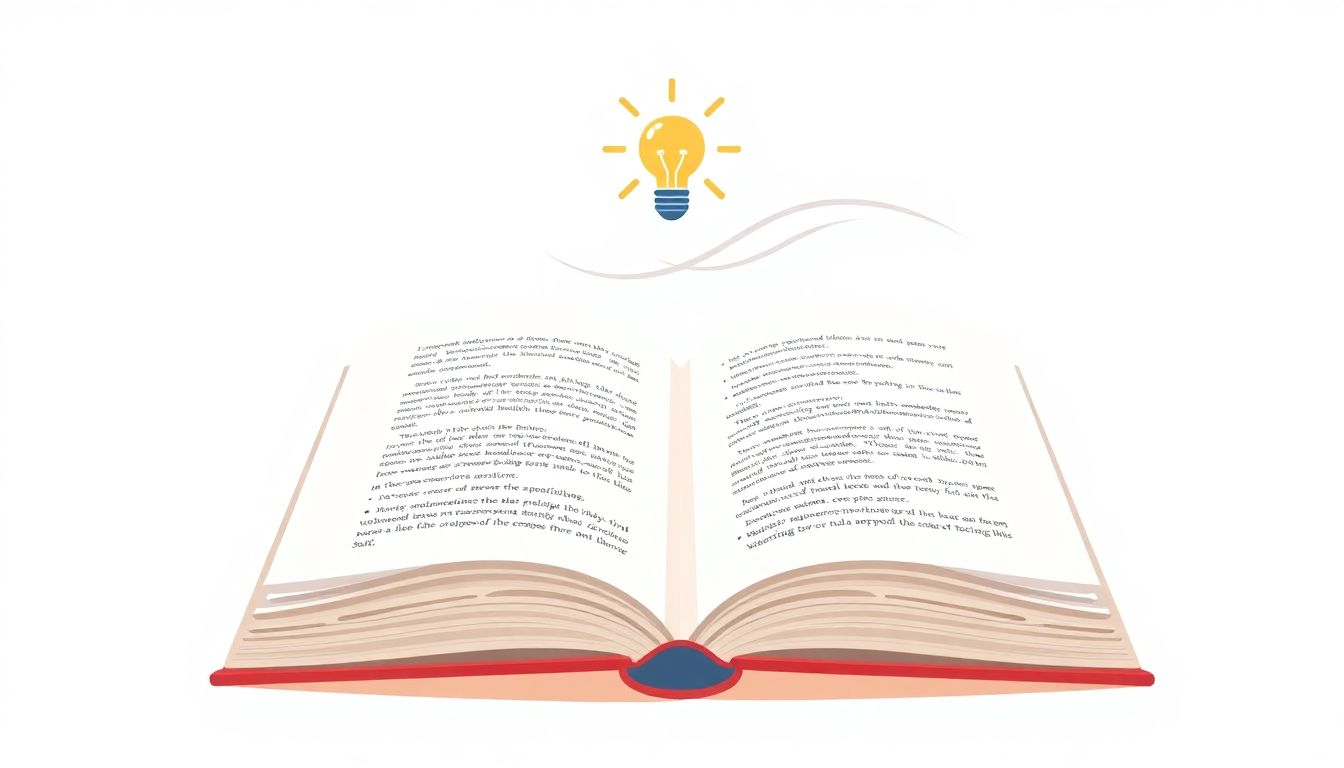We both know that moment when you’ve written content and hoped people would love it, only to realize they’re losing interest or getting confused halfway through. It can feel frustrating—like you’re doing something wrong but aren’t sure exactly what that something is.
Stick with me, because the good news is that a few simple insights from reader psychology can help you hook and hold your audience in no time. By tuning into how people think and feel when they read, you’ll keep them engaged, clear up confusion, and leave them eager for more.
Here’s a quick peek at what’s ahead—patterns, emotions, senses, clarity, discovery, everyday connections, tension, and an easy checklist at the end to make it foolproof.
Key Takeaways
- Structure your writing clearly using headings, bullet points, and short sentences so readers can easily follow and remember your points.
- Include emotion-driven language by addressing your reader’s specific feelings or pains, helping them connect personally and stay interested.
- Use sensory details—what readers can see, hear, feel, smell, or even taste—to make your descriptions vivid and memorable.
- Break down complex ideas into small, manageable pieces; avoid jargon and confusing language that overwhelms or frustrates your readers.
- Sprinkle interesting facts or surprising insights to spark curiosity and keep readers wanting more, creating tiny “aha” moments throughout.
- Relate your content to the familiar experiences your readers face daily, making the information practical and easy to recall later.
- Create curiosity or suspense by raising intriguing questions at the start, then answer them later on to keep readers engaged.
- Double-check your content using a quick checklist covering structure, emotional connection, sensory details, simplicity, curiosity, and clarity.

Step 1: Understand How Readers Recognize Patterns in Your Writing
If you want readers to genuinely engage with your content, you’ve got to make it easy for them to spot patterns and structures they’re familiar with.
One simple way to do this is by using clear, predictable formatting, such as headings, bullet lists, and numbered steps—the kind of thing your reader’s brain finds comforting and easy to digest.
People love patterns because our brains are wired to search out shortcuts and familiar landmarks. For example, have you ever noticed how top-performing blogs break down complicated ideas into easy, repeatable chunks?
Instead of long, intimidating paragraphs, opt for shorter sentences and plenty of whitespace to provide breathing room between ideas.
You can even experiment with repeating certain catchy phrases or calls-to-action at key points, reinforcing a familiar pattern that readers naturally latch onto and remember.
Step 2: Use Emotional Connections to Keep Readers Interested
Think back to an article you read recently—chances are, what made you stick around wasn’t just dry information, but how it made you feel.
Creating emotional connections is key to reader psychology. You can do this by understanding your audience’s hopes, frustrations, fears, or aspirations and thoughtfully weaving these into your writing.
For example, if you’re giving advice on getting your book published without an agent, acknowledge the frustrations and challenges your readers might face, such as feeling overwhelmed or uncertain.
Then provide gentle reassurance and practical steps they can take to move forward confidently.
An understandable, empathetic tone makes your audience feel seen and understood, and they’re more likely to trust your advice and keep coming back for more insights.
Step 3: Engage Readers by Triggering Their Senses
If you’ve ever read a description so vivid you could almost smell the fresh coffee or hear the leaves crunching underfoot, you’ve experienced sensory writing done well.
Our senses powerfully anchor our memories, and you can take advantage of this by frequently engaging your readers’ senses within your content.
Try being descriptive about specific things people see, hear, feel, or even taste when appropriate, instead of being vague or abstract.
For instance, if you’re offering winter writing prompts, describe the sharp chill in the air, the muffled sounds after new snowfall, or the warmth and spice of freshly baked holiday cookies.
This level of detail draws your readers fully into the scene, enhancing both their understanding and recall of your content—exactly what’s needed for creating engaging, memorable material they’ll genuinely enjoy.

Step 4: Balance Information Clearly to Avoid Confusing Your Reader
You know that feeling when you start reading a blog post, and halfway through, your brain starts feeling overloaded? Yeah, we’ve all been there.
Too much overload, and readers start ghosting your content faster than a bad dating app match.
To balance info in your writing, break complex ideas down into bite-sized pieces.
If you’re describing a tricky concept, introduce it gently, then follow up with one or two relatable examples.
For instance, psychology professionals often borrow statistics books from other disciplines, which shows that presenting data in easily understandable ways matters a lot (source: Learning Gate study).
Avoid jargon if you can, or at least explain it briefly:
- Focus each paragraph on ONE clear idea or message.
- Use bullet points to simplify data or highlight main points.
- Add a quick summary after complicated sections to reinforce the main idea.
The goal here is pretty simple: avoid confusion by leading your readers by the hand through your content.
Step 5: Create Moments of Discovery to Keep Your Readers Engaged
Reading your writing should feel like a good conversation where you surprise your friend with interesting trivia or helpful insight now and then.
Moments of discovery keep readers curious, always looking forward to what’s next.
An easy way to create these moments is to reveal interesting statistics or little-known insights that make your reader go “Oh, really?!” as they read along.
For example, did you know there are currently 3.5 million people employed with psychology degrees in the U.S., earning around $55,000 per year on average?
That’s a surprising tidbit you can casually drop into your article to raise curiosity and help people learn something unexpected.
Another trick: leave some subtle unanswered questions earlier in your text, then answer them clearly later on for a satisfying “Ahhh, now I get it” payoff moment.
Step 6: Help Readers Remember Your Content by Connecting to Everyday Details
Ever noticed how your memory grabs onto everyday stuff better than abstract concepts?
It’s easier to recall something that’s connected to familiar routines or activities—like when your favorite song reminds you of a specific road trip.
In your writing, link your main points to everyday details readers naturally relate to.
Let’s say you’re giving tips on how to create a great interactive eBook; you could point out common tasks readers already do, like tapping screen buttons or swiping through social media stories, and compare these activities directly to eBook interaction.
Simple comparisons like these offer strong mental connections that stick around long after readers are done reading your content.
Step 7: Use Tension Carefully to Keep Readers Wanting More
There’s nothing that keeps readers moving through content like well-balanced tension (think of your favorite shows that make you binge-watch).
The key here is moderation—your writing isn’t Game of Thrones, but small doses of curiosity help keep readers hooked.
So, how can you sprinkle a bit of tension into something as simple as your blog content?
- Start with an intriguing question readers really want to see answered later.
- Drop hints about useful tips or surprising stats coming up soon.
- Mention common mistakes or myths readers might unknowingly believe, promising clarity later.
This way, readers feel they have something valuable to look forward to, encouraging them to stick around till the end.
Final Step: Check Your Writing with a Reader Psychology Checklist
Congrats! You’ve made it all the way to the last step, but before you publish, let’s check over your work to make sure you’ve tapped into reader psychology effectively.
Here’s a quick, handy checklist you can use every time:
- Is your writing structured with clear patterns for easy reading?
- Did you weave emotional connections naturally into your content?
- Have you included sensory descriptions readers can vividly imagine?
- Are you balancing facts, examples, and everyday details smoothly?
- Did you create engaging moments of discovery or curiosity?
- Have you carefully introduced just enough tension to keep readers interested?
- And finally, double-check you’ve avoided confusing jargon or complex language.
If you ticked off these items, you’re good to go!
Remember, knowing your readers’ psychology doesn’t just help writing—it makes your readers genuinely enjoy what you offer.
FAQs
Emotion helps readers personally connect to your content. When readers care about the ideas or narratives presented, curiosity and attention rise naturally. Building emotional connections keeps readers invested, increasing their engagement and making your work memorable.
Balancing information ensures clarity and protects readers from confusion. Presenting clear, concise ideas without overwhelming detail helps readers easily digest your message. This approach improves reader enjoyment and boosts the likelihood they’ll retain your key points.
Tension keeps readers interested by sparking curiosity about outcomes or solutions. Effective tension means setting questions or dilemmas readers genuinely want answered, compelling them to continue reading. Good pacing is essential to avoid overwhelming or exhausting readers with constant suspense.
Readers remember content best with familiar details and relatable examples. Connecting your core ideas to everyday experiences or clear sensory cues makes your message simpler to absorb and recall, strengthening readers’ recall of your main points or insights.
